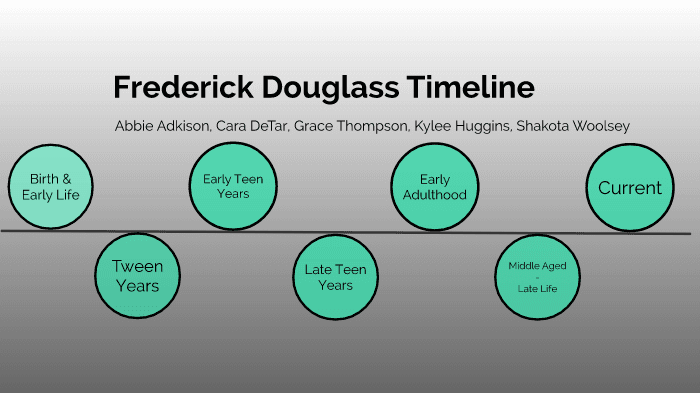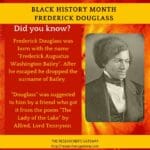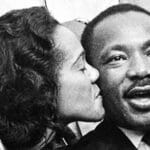Get ready to delve into the captivating life story of Frederick Douglass, a man who rose from the depths of slavery to become a beacon of freedom and equality. From his harrowing escape from bondage to his powerful advocacy for civil rights, Douglass’s legacy continues to inspire generations to fight for a just and equitable world. This timeline details his extraordinary journey, highlighting the pivotal moments that shaped not only his life but also the course of American history.
Early Life and the Seeds of Activism (c. 1818-1838)
Born Frederick Augustus Washington Bailey around 1818 in Talbot County, Maryland, Douglass’s early life was tragically defined by the brutal realities of slavery. Like many enslaved children, he was separated from his mother, Harriet Bailey, at a tender age, finding solace and guidance from his grandmother, Betsey Bailey. In 1826, he was sent to Baltimore to serve Hugh Auld, where a glimmer of hope emerged. Sophia Auld, Hugh’s wife, began teaching Douglass to read, but her efforts were thwarted by her husband, who feared the consequences of an educated slave.
Undeterred, Douglass continued his pursuit of knowledge, secretly teaching himself and fellow enslaved people to read. This period proved to be a turning point. Douglass’s access to “The Columbian Orator,” a collection of speeches, further fueled his desire for freedom and ignited his passion for oratory.
In 1833, after enduring horrific treatment from the notorious slave breaker Edward Covey, Douglass began to meticulously plan his escape. Despite a betrayal that temporarily derailed his plans, Douglass’s determination never wavered.
Escape and the Rise of a Powerful Voice (1838-1860)
On September 3, 1838, at the age of 20, Douglass successfully escaped slavery. Disguised as a sailor and armed with borrowed papers, he boarded a train in Baltimore, his heart likely pounding with a mixture of fear and exhilaration. His escape, a daring act of courage and resilience, led him to the free state of New York, where he later settled in New Bedford, Massachusetts, with his new wife, Anna Murray. It was there that Frederick Augustus Washington Bailey became Frederick Douglass, marking the beginning of his transformation into a powerful symbol of resistance.
The year 1841 marked a turning point in Douglass’s life. His powerful testimony at the Massachusetts Anti-Slavery Society convention captivated the audience, launching his career as a prominent lecturer for the society. His eloquence and firsthand accounts of the horrors of slavery challenged the conscience of a nation.
In 1845, Douglass published his groundbreaking autobiography, “Narrative of the Life of Frederick Douglass, an American Slave.” This literary masterpiece became an instant bestseller, further solidifying his role as a leading voice in the abolitionist movement. Not content to rest on his laurels, Douglass co-founded “The North Star” in 1847, an influential abolitionist newspaper that served as a beacon of hope and a platform for Black voices to be heard.
Throughout the 1850s, Douglass continued to lecture widely, advocating not only for the abolition of slavery but also for women’s suffrage. His unwavering commitment to equality and his powerful voice earned him both admiration and animosity. This period also saw a shift in Douglass’s views as he broke with abolitionist leader William Lloyd Garrison over philosophical differences regarding political action.
Navigating the Tumult of Civil War and Reconstruction (1861-1895)
As the nation grappled with the divisive issue of slavery, Douglass remained a steadfast advocate for abolition. When the Civil War erupted in 1861, he recognized both the peril and the opportunity it presented. He met with President Abraham Lincoln in 1863 to discuss the treatment of Black soldiers, advocating for their just treatment and their right to fight for the Union.
The year 1865 marked a watershed moment, with the abolition of slavery and the end of the Civil War. Douglass, a beacon of hope throughout those tumultuous years, continued his tireless work for equality. During Reconstruction, he held various government positions, including U.S. Marshal for the District of Columbia (1877-1881). In 1889, he made history again, becoming the first African American to serve as the U.S. Minister to Haiti.
Even in his later years, Douglass never wavered in his fight for justice. His “Atlanta Compromise” speech, delivered in 1895, sparked debate and criticism for its conciliatory tone towards the South. However, it also demonstrated Douglass’s evolving views on race and reconciliation.
On February 20, 1895, Frederick Douglass passed away at his home in Washington, D.C. His life and writings continue to inspire generations fighting for equality and justice. His work remains essential to understanding the history of slavery, racism, and the ongoing struggle for civil rights in America.
What is the Timeline of Frederick Douglass?
To further understand the magnitude of Douglass’s impact, let’s break down his life’s journey into key periods:
I. Early Life and Enslavement (c. 1818-1838):
- c. 1818: Born Frederick Augustus Washington Bailey in Talbot County, Maryland. His mother was Harriet Bailey (enslaved). His father is believed to have been Aaron Anthony (slave owner), though this is not definitively confirmed.
- 1819-1825: Lives with his grandmother, Betsey Bailey.
- 1825: His mother dies.
- 1826: Sent to Baltimore to serve Hugh Auld. Sophia Auld begins teaching him to read but stops due to her husband’s objections.
- 1830-1833: Discovers “The Columbian Orator,” which profoundly influences his desire for freedom and develops his appreciation for language. He is exposed to religion and continues to educate himself. Upon his master’s death, he is willed to Lucretia Auld. Following her death, he becomes the property of Thomas Auld.
- 1833-1836: Endures brutal treatment by slave breaker Edward Covey. He begins secretly teaching fellow enslaved people to read and plans to escape, but his plans are ruined by a betrayal.
- 1836-1838: Returns to Baltimore and is hired out to various tradesmen. He masters the skill of caulking.
II. Escape and Rise as Abolitionist (1838-1860):
- 1838: Escapes slavery, aided by the Underground Railroad and using borrowed papers. He settles in New Bedford, Massachusetts, marries Anna Murray, and changes his name to Frederick Douglass. To support himself, he works a variety of jobs.
- 1839: His daughter, Rosetta, is born.
- 1840: His son, Lewis Henry, is born. Douglass attends abolitionist meetings and becomes a subscriber to William Lloyd Garrison’s “The Liberator.”
- 1841: Delivers his first major speech at the Massachusetts Anti-Slavery Society convention, captivating the audience and beginning his journey as a powerful orator for the anti-slavery cause.
- 1845: Publishes his impactful autobiography, “Narrative of the Life of Frederick Douglass, an American Slave.” The book quickly gains recognition and becomes a bestseller.
- 1847: Establishes and publishes “The North Star,” an abolitionist newspaper intended to give Black Americans a platform and to advocate for social justice.
- 1850s: Continues delivering lectures against slavery, taking a firm stance in favor of women’s suffrage, and challenging racial discrimination. Due to differing views, he separates from William Lloyd Garrison regarding political strategies.
III. Civil War and Reconstruction (1861-1895):
- 1861: Engages in significant discussions with President Abraham Lincoln concerning the treatment of Black soldiers in the Civil War. He uses his influence to advocate for the enlistment of Black troops.
- 1863: His sons, Charles Remond and Lewis Henry Douglass, serve in the renowned 54th Massachusetts Infantry Regiment, a regiment composed primarily of African American men.
- 1865: Celebrates the conclusion of the Civil War and the abolition of slavery. He persists in his fight for equal rights and voting rights for Black Americans during the Reconstruction era.
- 1872: Becomes the first African American to receive a nomination for Vice President of the United States. He runs on the Equal Rights Party ticket with Victoria Woodhull.
- 1877-1881: Holds several positions in government, such as U.S. Marshal for the District of Columbia.
- 1889-1891: Serves as the U.S. Minister to Haiti.
- 1895: Delivers his “Atlanta Compromise” speech, which ignites debate and faces criticism for advocating for a more conciliatory approach towards the South.
IV. Death and Legacy
- February 20, 1895: Dies at his home in Washington, D.C.
- Douglass’s impactful life and influential writings continue to be a source of inspiration for those fighting for equality and justice. His work remains a crucial resource for comprehending the history of slavery and racism in America.
When Did Douglass Finally Escape Slavery?
Frederick Douglass made his courageous escape from slavery on September 3, 1838, at the age of 20. This wasn’t a spur-of-the-moment decision. It was a carefully calculated plan requiring immense bravery and fueled by an unyielding hope for freedom.
Douglass, disguised as a sailor, boarded a train in Baltimore, Maryland. To make his escape, he used borrowed papers, claiming he was a free man. The danger was immense. One suspicious look, one question too many, and his plan could have unraveled.
He journeyed north, the threat of capture looming large, until he finally reached the sanctuary of New York, a free state. The relief he must have felt is almost unimaginable.
This daring escape wasn’t merely a personal victory for Douglass. It was a pivotal moment that transformed him from an enslaved man into an unwavering voice for freedom and justice. His escape became a testament to the strength of the human spirit and the power of hope, even in the face of unimaginable adversity.
What Did Frederick Douglass Do in 1842?
The year 1842 was pivotal for Frederick Douglass and his rise as a leading figure in the abolitionist movement. Just a few years after his escape from slavery, Douglass was already gaining recognition for his powerful speeches denouncing the institution that had held him captive. In 1842, his activism took a significant step forward when he became a paid speaker for the Massachusetts Anti-Slavery Society. To fully grasp the profound nature of this transition, one must consider that Douglass went from being enslaved to being employed by an organization dedicated to the very freedom he had been denied for so long.
His impact, however, went far beyond a simple employment change. Douglass embarked on a grueling speaking tour that spanned over 3,500 miles across the Northern states. He poured his heart and soul into every speech, captivating audiences with the raw honesty and emotional depth of his experiences as an enslaved man.
Douglass’s ability to connect with people on such a profound level, to make them feel the injustice of slavery in a way that transcended newspaper articles and pamphlets, was a force to be reckoned with. His eloquence, passion, and the undeniable truth woven into every word he spoke challenged the beliefs of his audiences, sparking conversations, and planting the seeds for change.
What Happened to Frederick Douglass in 1855?
The year 1855 proved to be a time of significant change and challenges for Frederick Douglass. He found himself grappling with the complexities of the abolitionist movement and what strategies were most effective in dismantling the institution of slavery. This year marked the publication of his second autobiography, “My Bondage and My Freedom,” a work that transcended the typical “escaped slave” narrative. This book was a searing critique of American society, forcefully deconstructing racist beliefs that fueled the system of slavery.
This period also marked a point of divergence in the abolitionist movement. John Brown, a fellow abolitionist, was fervently advocating for a violent uprising as the path to ending slavery. Douglass, while respecting Brown’s passion, disagreed with this approach. He believed in empowering Black communities through education and self-sufficiency. His position highlights the complex nature of the abolitionist movement and the lack of a singular approach to achieving the shared goal of ending slavery.
Douglass faced personal attacks and experienced heartbreaking losses throughout his life. Despite this, his dedication to justice never wavered. He continued delivering fiery speeches, writing with unwavering conviction, and campaigning for the right to vote for Black Americans. He was laying the groundwork for a future where equality would reign, and all people, regardless of skin color, would have the opportunity to live freely.
Why Frederick Douglass Still Matters Today
Frederick Douglass’s life was a testament to the indomitable human spirit, a beacon of hope in the face of unimaginable adversity. He refused to be defined by the confines of slavery. Instead, he used his voice, intellect, and unwavering spirit to challenge injustice and champion equality.
His legacy serves as a timeless reminder that the fight for justice is an ongoing journey, one that requires constant vigilance and a dedication to dismantling systems of oppression. His story calls upon us to confront inequality in all its forms – racism, discrimination, and prejudice – and to continue the pursuit of a more just and equitable society for all.
Do you want to learn more about the life and impact of iconic and unforgettable figures? Discover Rosie the Riveter’s inspiring images and explore the pivotal moments in Ruby Bridges’s courageous journey.
- How the Telephone Revolutionized Business: A Historical Perspective - April 19, 2025
- Understand bone yellow: Colorism’s impact on Black communities - April 19, 2025
- Green Natural Sandstone: Eco-Friendly Building Solutions - April 19, 2025

















2 thoughts on “Frederick Douglass Timeline: From Enslaved to Statesman”
Comments are closed.